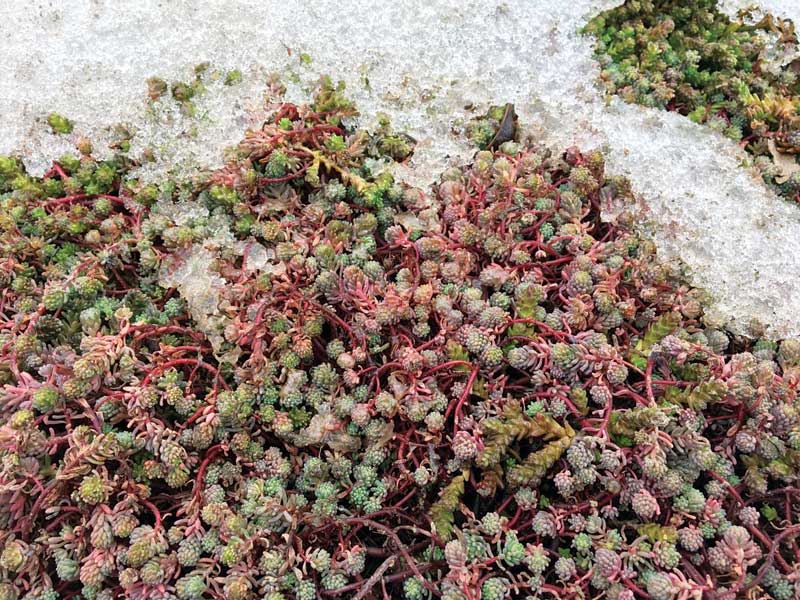Designing vegetated roofs to survive winter

Dormancy
In autumn, vegetated roofs enter the dormancy cycle. As rooftop conditions are harsher than at the ground-level, the exposed vegetation enters into the dormancy cycle earlier than its counterparts on the ground. Dormancy is a natural reaction to adverse environmental conditions, a defense mechanism. It can happen in the summer during periods of intense heat and drought, or in the fall in preparation for the cold winter months. It is a state of reduced metabolic activity when plants simply stop growing and developing to conserve energy. (Read Brian Capon’s Botany for Gardeners, published by Timber Press in 2005.)
During dormancy, the retreating plants are not dead. Dormancy synchronizes with the environment and can be predictive or consequential. In the first category, the plant’s dormancy cycle is triggered by a temperature drop, predicting the onset of winter. Consequential dormancy occurs when there are sudden changes in climactic conditions, such as reduction in rainfall and water shortages, causing arrested development with a goal to conserve energy and survive.
When experiencing predictive or consequential dormancy, vegetated roofs lose their flowers and change colour, creating a beautiful landscape of reds, browns, and deep purples. During winter dormancy, coniferous sedum plants retreat to form a dense mat of glossy and fleshy leaves, while the leaves of deciduous sedum species completely fall off.
Installation tips
Many vegetated roofs are installed in the autumn due to the construction schedule and a desire to finish the project. In such cases, it is critical to have mature and well-established plants as they have greater survivability on rooftops than immature seedlings. Pre-cultivated systems should have a minimum of 80 per cent coverage upon installation to ensure there is blanket coverage and minimum erosion of growing medium. The pre-cultivated vegetation may have been disturbed during harvest, transport, and installation. Therefore, after installation, it is imperative to keep the vegetated system hydrated during the establishment period for the plants to recover, take root, and prepare for the coming winter.
Extreme temperatures
Once cold temperatures set in, a well-hydrated vegetated roof goes into dormancy. The pre-cultivated vegetation protects the growing medium from the strong, cold winds and potential erosion. Snow accumulation is ideal as it insulates the vegetation. A blanket of snow shelters the vegetated roof from strong winds and helps the plants retain moisture. If there is little or no snow accumulation, and the vegetated roof is subject to high winds, extreme fluctuations in temperature, or a particularly severe ice storm, plant desiccation or “winter burn” can occur. This type of scenario, where plants dry out and die, may expose areas of growing medium to erosion by high winds. If such damage occurs to the vegetated roof, a straightforward procedure for repair can be implemented the following spring. This procedure also applies to other vegetated roof repairs necessitated by excessive foot traffic or construction materials left on the plants for extended periods.
Repairs are done in the spring using a variety of sedum clippings sprinkled, where needed, to replace damaged or eroded sections. Succulent plants such as sedums are easy to propagate. Many can be rooted from a single leaf; others will root quickly from a stem cutting. For areas that suffered erosion, additional engineered growing medium should be added, as required. After the initial planting of clippings, frequent, light irrigation is required to keep the vegetated roof moist and help ensure the plants take root.


